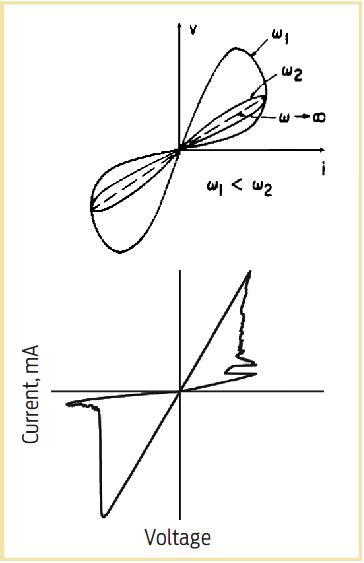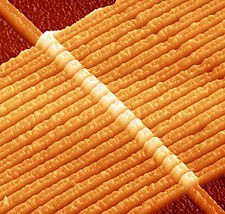|
|
|
 | ||
|
| ||
WEDNESDAY, February 11, 2009
Please register in advance for this event, using our IEEE Council's DoubleKnot registration site.

|
You may register yourself, plus others from your company/institution, for both dinner and presentation, or for only the presentation, or simply to hear by email when the talk's slides are posted to the website. You may make an on-line payment for the dinner, or arrange to pay at the door. |
 PLEASE RESERVE IN ADVANCE --
PLEASE RESERVE IN ADVANCE --



Useful references:
R. Stanley Williams is an HP Senior Fellow at Hewlett-Packard Laboratories and Director of the Information and Quantum Systems Laboratory (IQSL), which currently has over 80 scientists and engineers working in areas of fundamental physical sciences and engineering. There are four active HP Senior Fellows out of a total technical staff of 40,000 in Hewlett-Packard Company. He received a B.A. degree in Chemical Physics in 1974 from Rice University and his Ph.D. in Physical Chemistry from U. C. Berkeley in 1978. He was a Member of Technical Staff at AT&T Bell Labs from 1978-80 and a faculty member (Assistant, Associate and Full Professor) of the Chemistry Department at UCLA from 1980–1995. He joined HP Labs in 1995 to found the Quantum Science Research group, which focused primarily on fundamental research at the nanometer scale. His primary scientific research during the past thirty years has been in the areas of solid-state chemistry and physics, and their applications to technology. This has evolved into the areas of nanostructures and chemically-assembled materials, with an emphasis on the thermodynamics of size and shape. Most recently, he has examined the fundamental limits of information and computing, which has led to his current research in nano-electronics, -ionics, -mechanics and -photonics. In 2008, a team of researchers he led announced that they had built and demonstrated a memristor, the fourth and final fundamental electronic circuit element, complementing and completing the capacitor, resistor and inductor. He has received awards for business, scientific and academic achievement, including the 2007 Glenn T. Seaborg Medal for contributions to Chemistry, the 2004 Joel Birnbaum Prize (the highest internal HP award for research), the 2004 Herman Bloch Medal for Industrial Research, the 2000 Julius Springer Award for Applied Physics, the 2000 Feynman Prize in Nanotechnology, the Dreyfus Teacher-Scholar Award and the Sloan Foundation Fellowship. He was named to the inaugural Scientific American 50 Top Technology leaders in 2002 (and then again in 2005). In 2005, the US patent collection that he has assembled at HP was named the world's top nanotechnology intellectual property portfolio by Small Times magazine, and the Chinese Academy of Science voted the crossbar latch invented in his lab as the third most significant scientific breakthrough of the year (behind the Cassini and Deep Impact space missions). He was a co-organizer and co-editor (with Paul Alivisatos and Mike Roco) of the workshop and book "Vision for Nanotechnology in the 21st Century", respectively, that led to the establishment of the U. S. National Nanotechnology Initiative in 2000. He has been awarded 77 US patents with more than forty pending, he has published over 300 papers in reviewed scientific journals (with an h-index of 48), and he has written several general articles for technical, business and popular publications (including an article in the Nov. 2005 issue of Scientific American). One of his patents was named as one of five that will "transform business and technology" by MIT's Technology Review in 2000. He has presented hundreds of invited plenary, keynote and named lectures at international scientific, technical and business events, including one of the 2007 50th Anniversary Laureate Lectures for the TMS, the 2003 Joseph Franklin Lecture at Rice University, the 2004 Debye Lectures at Cornell University, the 2004 Bloch Lecture at the University of Chicago, and the 2005 Carreker Engineering Lecture at Georgia Tech.
|
SCV Chapter
Home Page |
How to Join IEEE |
Contact our Chapter Chair |
| CPMT Society
Home Page |
IEEE Home Page |
Email
to Webmaster |
Last updated on